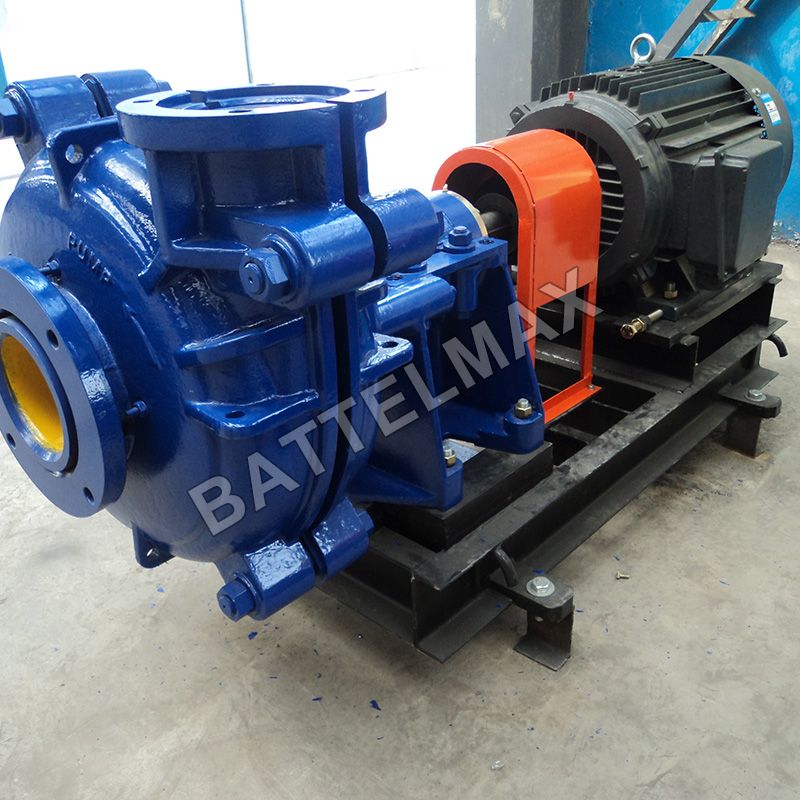Tips for Selecting the Right Slurry Pump Based on Particle Size and Concentration
In industries such as mining, wastewater treatment, and construction, the handling of slurries is a common requirement. Slurries consist of solid particles suspended in a liquid medium, presenting unique challenges for pumping systems. Selecting the right slurry pump is crucial to ensure efficient and reliable operation. In this article, we will provide valuable tips for choosing the appropriate slurry pump based on the particle size and concentration of the slurry, enabling optimal performance and longevity of the pumping system.

Understanding Particle Size and Concentration
Particle Size
Particle size refers to the dimensions of the solid particles present in the slurry. It is typically measured in micrometers (µm) or millimeters (mm). The particle size distribution can vary significantly, ranging from fine particles of a few micrometers to larger particles of several millimeters. Understanding the particle size distribution is vital as it directly influences the pump's performance and selection.
Concentration
Concentration, also known as solid content or solids concentration, refers to the proportion of solid particles in the slurry by volume or weight. It is typically expressed as a percentage. Concentration levels can vary widely depending on the application, ranging from low concentrations of a few percent to high concentrations exceeding 50%.
Tips for Selecting the Right Slurry Pump
1. Determine the Particle Size Distribution
Before selecting a slurry pump, it is crucial to analyze the particle size distribution of the slurry. This information helps determine the pump's handling capabilities and ensures that it can accommodate the range of particle sizes present. Consider factors such as the maximum particle size, the presence of fine or abrasive particles, and any potential variations in the particle size distribution.
2. Evaluate the Slurry's Concentration
The concentration of the slurry influences the pump's ability to handle the solids efficiently. Higher concentrations often require pumps specifically designed for handling dense slurries. It is important to select a pump that can handle the desired concentration without excessive wear or clogging issues. Consider the maximum concentration expected and consult the pump manufacturer's guidelines for appropriate pump selections.
3. Assess the Pump's Impeller Design
The impeller is a critical component of a slurry pump and plays a significant role in handling various particle sizes and concentrations. Different impeller designs are available, each suitable for specific applications. For example, open impellers are generally better suited for handling larger particles, while closed or semi-open impellers are more efficient for higher concentrations and finer particles. Consider the pump's impeller design and ensure it aligns with the slurry's characteristics.
4. Consider Wear and Corrosion Resistance
Slurries with abrasive or corrosive particles can cause rapid wear and deterioration of pump components. When selecting a slurry pump, consider the materials used for construction. Materials such as high-chrome alloys, rubber, or ceramic coatings offer enhanced wear and corrosion resistance, ensuring prolonged pump life and reduced maintenance requirements.
5. Evaluate Pump Configuration and Operating Conditions
The pump's configuration and operating conditions should match the specific requirements of the slurry application. Consider factors such as flow rate, head (pressure), and the required power supply. Additionally, assess the pump's ability to handle variable conditions, such as fluctuations in particle size or concentration, as some applications may experience changes over time.
Conclusion
Selecting the right slurry pump based on particle size and concentration is crucial for ensuring efficient and reliable operation in industries handling slurries. By understanding the particle size distribution, evaluating the slurry's concentration, assessing impeller design, considering wear and corrosion resistance, and evaluating pump configuration and operating conditions, you can make an informed decision. Consulting with pump manufacturers or experts in slurry handling can provide valuable insights and assistance in selecting the most suitable pump for your specific application.
327
0
0

Comments
All Comments (0)